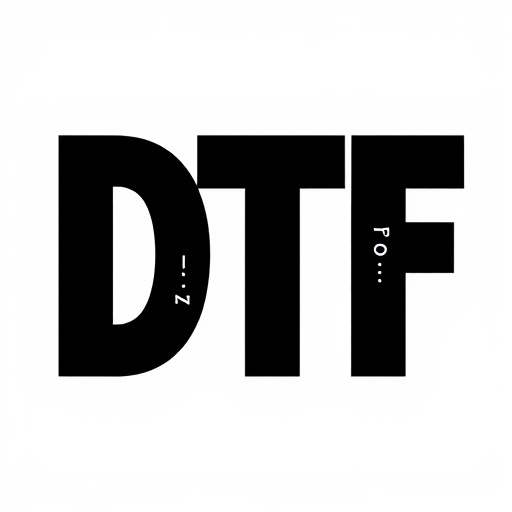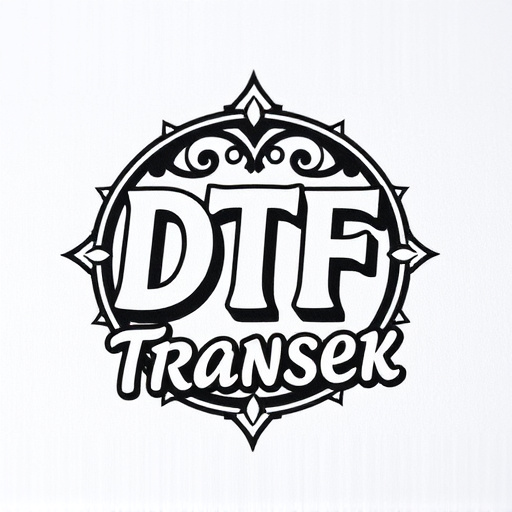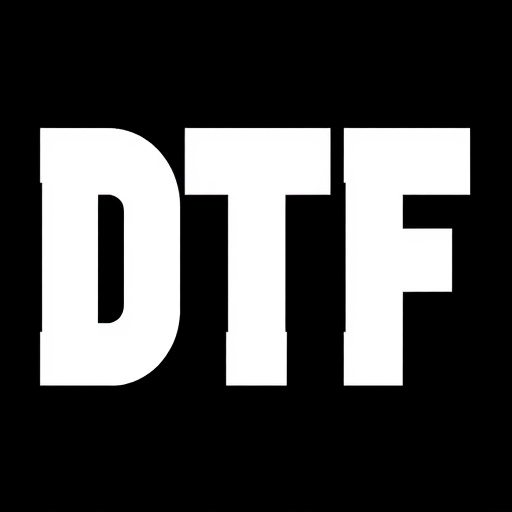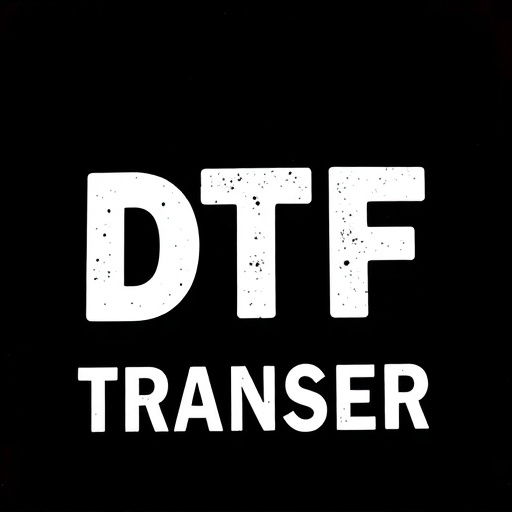Direct-to-Film (DTF) transfer technology is revolutionizing print production with direct, high-quality dimensional printing on various surfaces. Key factors for successful DTF orders include considering material dimensions and properties to prevent warping or misalignments during the process. While standard sizes are cost-effective, custom options cater to unique shapes and intricate designs. Material choices range from vinyl and flexographic inks for long-lasting outdoor prints to heat-transfer films, metallics, and reflective inks for enhanced design effects. High-resolution images and specialized DTF inks ensure color accuracy and durability, with UV-resistant options for outdoor or high-touch applications. Case studies showcase DTF's versatility across industries, demonstrating its adaptability for diverse material printing, from labels to textiles.
In the realm of printing, Direct-to-Film (DTF) transfer has emerged as a game-changer, offering unparalleled versatility and quality. This article delves into the dimensional options available for DTF transfer orders, a crucial aspect often overlooked yet critical to successful prints. We explore standard vs. custom sizes, material choices, and best practices for achieving durability. Through case studies, we illustrate how understanding dimensions can lead to exceptional DTF printing outcomes.
- Understanding Direct-to-Film (DTF) Transfer: A Brief Overview
- The Importance of Dimensional Considerations for DTF Prints
- Standard vs Custom Sizes: Which is Best for Your Order?
- Material Options for DTF Transfer: Exploring the Possibilities
- Achieving Quality and Durability in DTF Printing
- Case Studies: Successful DTF Transfer Orders and Their Dimensions
Understanding Direct-to-Film (DTF) Transfer: A Brief Overview
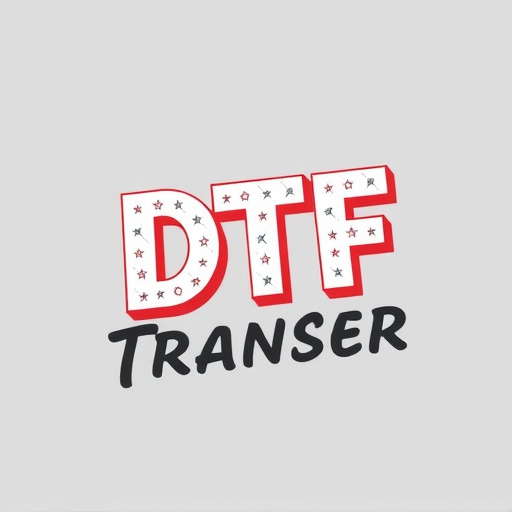
Direct-to-Film (DTF) transfer is a cutting-edge printing technology revolutionizing the way we produce high-quality prints directly onto various surfaces, from glass and metal to wood and plastics. This innovative process eliminates the need for intermediate steps, such as creating film negatives or plates, making it an efficient and versatile option for custom print orders. DTF allows designers, artists, and businesses to bring their creative visions to life with remarkable precision and speed.
DTF Printing offers a range of dimensional options, ensuring that final prints can have depth and texture akin to the original artwork. This is achieved through specialized inks and printing techniques, enabling the reproduction of intricate details and bold colors. Whether for decorative purposes or functional applications, DTF Transfer provides an unparalleled level of customization, making it a preferred choice for those seeking unique, dimensional prints without the complexities of traditional printing methods.
The Importance of Dimensional Considerations for DTF Prints
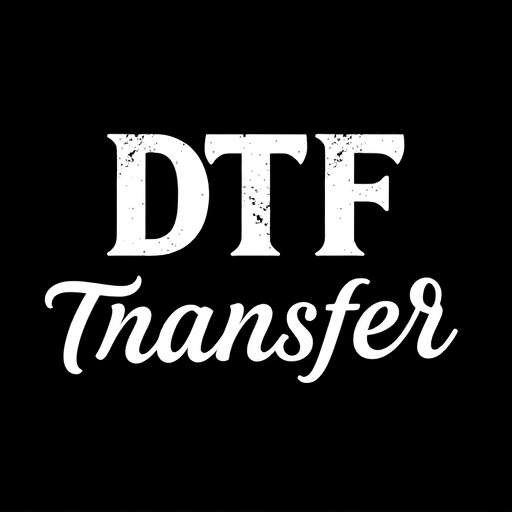
When considering direct-to-film (DTF) transfer orders, dimensional considerations play a pivotal role in ensuring high-quality prints. The accuracy of dimensions is critical for achieving precise and detailed DTF results. Each material has its own unique properties that affect how it’s printed, including its flexibility, thickness, and stretchability. For instance, a rigid material like vinyl will require specific settings to prevent warping or stretching during the transfer process, whereas a more pliable substrate might demand different pressure and temperature controls to secure an intact print.
In DTF printing, dimensional precision is especially important for complex designs with intricate details. Even minor misalignments can result in distorted or missing elements of the artwork when transferred to the final medium. Therefore, understanding the dimensions of both the design and the chosen film is essential. This knowledge allows printers to adjust their equipment and techniques accordingly, ensuring that DTF transfers produce crisp, clear images with accurate color representation across various materials.
Standard vs Custom Sizes: Which is Best for Your Order?
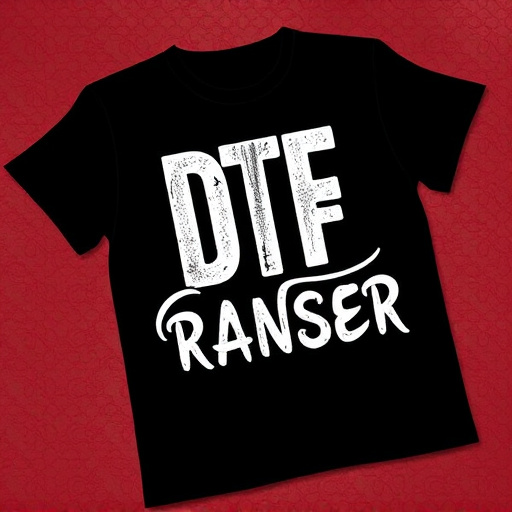
When placing a direct-to-film (DTF) transfer order, one key consideration is choosing between standard and custom sizes. Standard sizes are usually pre-determined and offered by print service providers, catering to common applications like signage or small batches of merchandise. These options are cost-effective for smaller orders or when your design fits within typical dimensions. However, they may not accommodate unique product shapes or large-scale projects.
Custom sizes provide flexibility, allowing you to specify exact dimensions tailored to your specific DTF transfer needs. This is ideal for custom products, intricate designs, or orders requiring unusual shapes. While custom sizing offers more freedom, it might come with additional costs and production time. For DTF printing, evaluating the complexity of your design, budget, and intended use will help determine whether standard or custom sizes are best suited for your order.
Material Options for DTF Transfer: Exploring the Possibilities
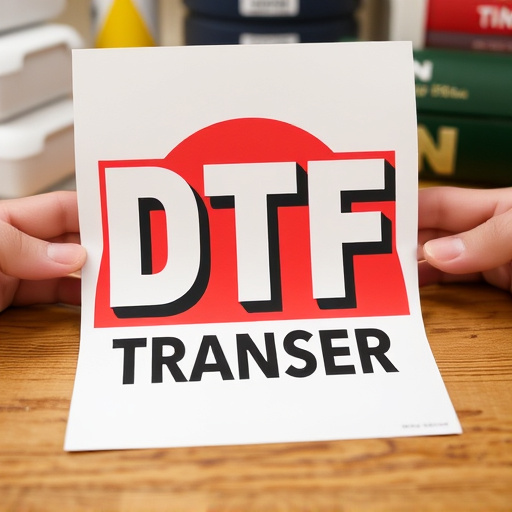
Direct-to-film (DTF) transfer orders offer a range of dimensional and material options to cater to diverse printing needs. When it comes to material choices, DTF technology provides an exciting array of possibilities. The most common materials include high-quality vinyl and flexographic inks, which are ideal for creating vibrant, long-lasting prints on various surfaces. These materials are versatile, allowing for both indoor and outdoor applications, and can be tailored to different thicknesses and finishes.
Additionally, DTF Printing enables the use of specialized materials like heat-transfer films, which are perfect for complex designs and detailed graphics. This technology also accommodates metallic and reflective inks, adding a touch of glamour and modern aesthetics to prints. Furthermore, with advancements in DTF Transfer techniques, it is now possible to print on unconventional materials such as wood, fabric, and even certain types of plastics, opening up a world of creative opportunities for designers and printers alike.
Achieving Quality and Durability in DTF Printing
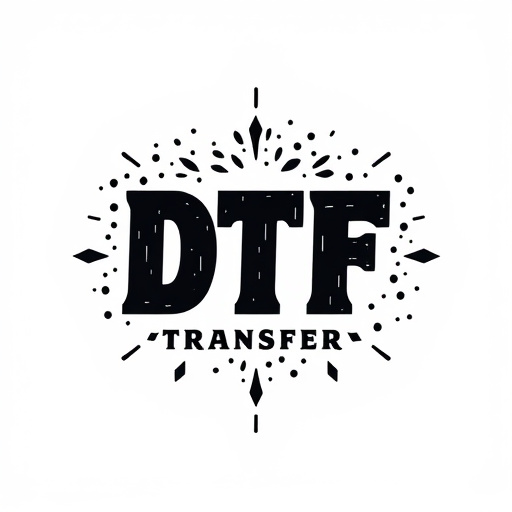
Achieving high-quality and durable results is paramount when considering Direct-to-Film (DTF) transfer orders. This printing method involves transferring designs onto various materials, such as fabric or plastic, directly from a digital file. The key to exceptional DTF prints lies in meticulous attention to detail during the process. Printers must ensure precise color accuracy, crisp lines, and optimal ink adhesion. Using high-resolution images and specialized inks designed for DTF printing is essential to meet these standards.
Durability is another critical aspect, especially when producing items meant for outdoor use or extensive handling. Weather resistance and fade-free colors are achievable through the selection of suitable materials and inks. Many professional DTF printers offer a range of options, including UV-resistant inks and laminates, to safeguard against environmental factors and prolong the lifespan of the final prints. This commitment to quality ensures that DTF transfers not only look exceptional but also withstand the test of time.
Case Studies: Successful DTF Transfer Orders and Their Dimensions
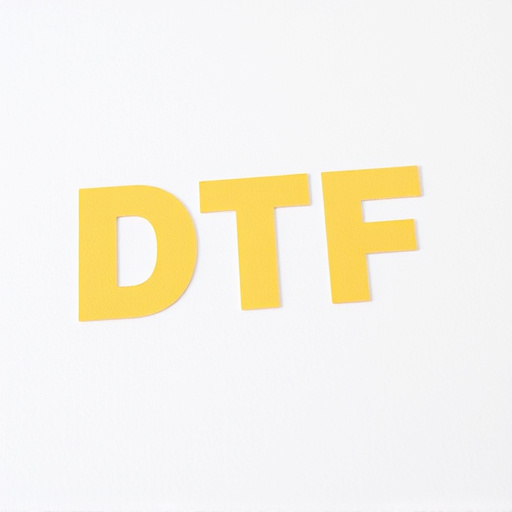
Direct-to-film (DTF) transfer orders have proven to be a game-changer in various industries, offering precise and efficient printing solutions. Case studies from leading manufacturers and print service providers highlight successful DTF transfer projects, providing valuable insights into dimensional considerations. These real-world applications showcase the versatility of DTF technology across diverse materials, from flexible films to rigid substrates.
For instance, a study by a prominent packaging company demonstrated the effectiveness of DTF printing for custom product labeling. By utilizing a 5×7 inch (125×178 mm) print area, they achieved high-resolution graphics and vibrant colors on polypropylene labels, ensuring product identification and branding at scale. Similarly, a fashion brand utilized DTF to print intricate designs on textile substrates, achieving precise color accuracy and detailed patterns across various garment dimensions, ranging from 3×5 inches (76×127 mm) for small accessories to 12×18 inches (305×457 mm) for larger garments. These examples illustrate the adaptability of DTF transfer orders in catering to different product requirements and print sizes.









